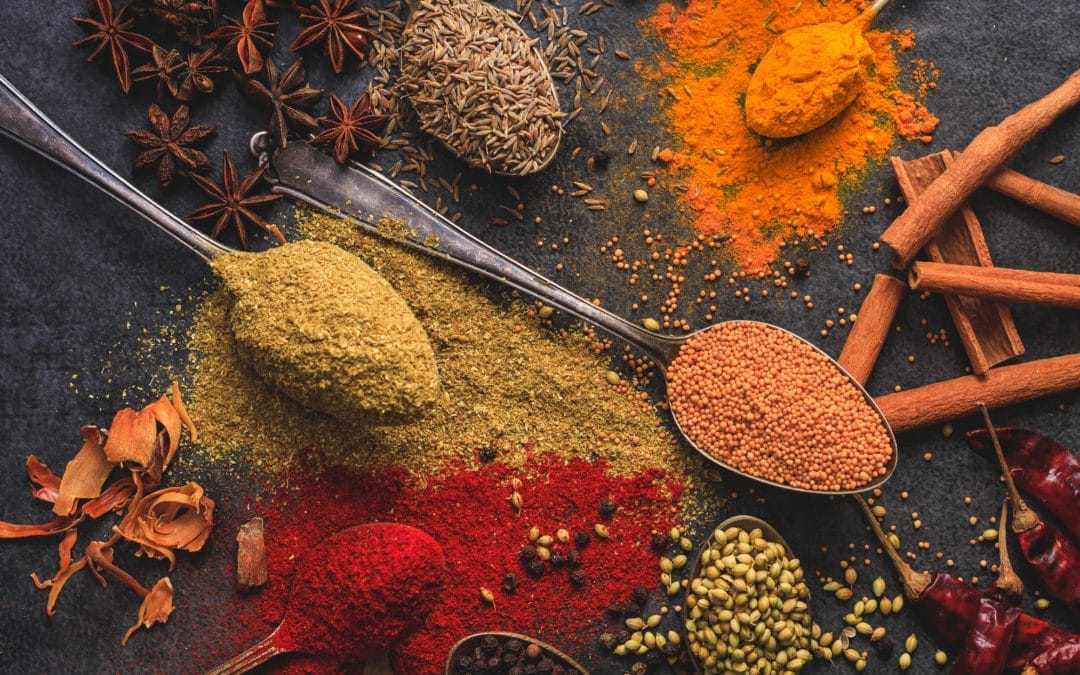Āyurveda, the science of life and longevity, is an ancient medical science from India based on the Five Elements (Space, Wind, Fire, Water and Earth). The Five Elements are grouped into 3 pairs, called doṣa (pronounced dosha) that together describe all bodily functions. Everything from inhale and exhale, to digesting foods and experiences, to the stability in our joints and building of our tissues is described by these 3 doṣa (dosha).
Doṣa (dosha) are the functional capacities of the body; they are how the body tends to operate. For example, if ‘a person runs hot’ (pitta) and never needs a sweater, or ‘has dry skin and eyes’, (vāta) etc. How much of each doṣa (dosha) is in the body can shift as our systems change.
The Elements of Each Doṣa (Dosha)
To understand this more deeply, it is useful to look at the two elements that make up each doṣa (dosha).
Every element is associated with a set of qualities:
- Wind is moving.
- Fire is hot.
- Water is fluid.
When the two elements are combined into a doṣa (dosha), it possesses the qualities of the elements from which it is made.
The Qualities of Each Doṣa (Dosha)
The elements that make up the doṣa (dosha) work in tandem as a kind of humor or substance that affects everything throughout the system. More precisely, the qualities of the doṣa (doshas) are responsible for the actions and functions in the body.
1. Vāta
Vāta (Space and Wind) is mobile, cold, dry, light and subtle. When a person comes into contact with anything that has those qualities it more easily increases the vāta in their system, since the person already has vāta tendencies. Therefore, if you are already a person who feels dry, and then you fly on an airplane (at high speed and with dry air), the dryness in your body will naturally increase.
2. Pitta
Pitta (Fire and Water) is hot, sharp, penetrating, oily, smelly and spreading. If a person who naturally runs hot then sits out in the hot sun, eats extremely spicy food and has a ‘pressure cooker’ of a job, then the pitta qualities in their body will easily increase as well.
3. Kapha
Kapha (Water and Earth) is sticky, cool, hard and heavy. Consequently, when a person with those natural tendencies and then sits on the couch all day, eats a huge lunch with ice cream and takes a nap, the heavy qualities in their body will easily get much heavier.
The Three Dosha: Tridoṣa
This is why the word ‘doṣa’ (pronounced dosha) which literally means ‘fault’, was chosen. They are tendencies that can easily go out of balance. And when they do, they cause discomfort and the symptoms of illness.
Balanced, the doṣas work together in the body to support overall health and vibrancy. When one or more is out of balance, it causes a lot of discomfort and eventually leads to disease.
Vāta
Vāta is responsible for every and all movements in the body, mind, and senses. From thinking to breathing, blinking, talking, pointing (and even defecating!), it is the foundation of all our movements. When vāta goes out of balance, a person can tend toward dry constipation, gas, bloating, twitches, tremors, and pain to name a few. Emotionally, there can be a tendency for fear and anxiety.
To balance vāta, we want to bring in the opposite qualities (warm, moist, and slightly oily) through:
- Warm cooked whole foods
- Cozy environments
- Calm, grounding and steadfast friends
- Grounding, slow and melodic music
Pitta
Pitta supports every transformation in our system, including converting food into nourishment and ideas into action. It’s responsible for digestion, absorption, and body temperature. When pitta goes out of balance, a person can have symptoms of burning, excess heat, sweating, and bleeding. Anger and frustration, and a tendency toward judgements and perfection are pitta emotions.
To balance pitta, it’s important to bring in the opposite qualities (cool, soft, and static) through:
- A meal with cilantro
- Cool, moonlit walk outside
- Sweet and accommodating friends
- The fragrances of roses and jasmine
Kapha
Kapha lubricates the body: providing fluidity and creating stability of form and structure. This doṣa (dosha) is cool, sticky, heavy and hard.
Kapha holds us up, providing structure, and maintaining stability within all the movements. For example, when kapha goes out of balance, a person can experience slow and sluggish digestion, excess mucus, congestion, and coldness in the body. Emotions can also tend toward attachment and worry.
Light, warm, and dry qualities balance kapha:
- Cooked bitter greens
- A warm dry climate
- Exciting, interesting and stimulating friends
- Exercise
Summary
In conclusion, vāta, pitta and kapha are responsible for all of the basic functioning of the body and comprise everything it does. Vāta is responsible for all movement in the body: breathing, elimination, and peristalsis. Pitta is responsible for all transformation in the body: parts of our digestion, ability to translate what we see into information, and nourishment of the body. Kapha is responsible for stability in the joints and in the body. The entire human system is founded on the Five Elements manifested as the 3 doṣas and because of their daily presence, we are alive.



